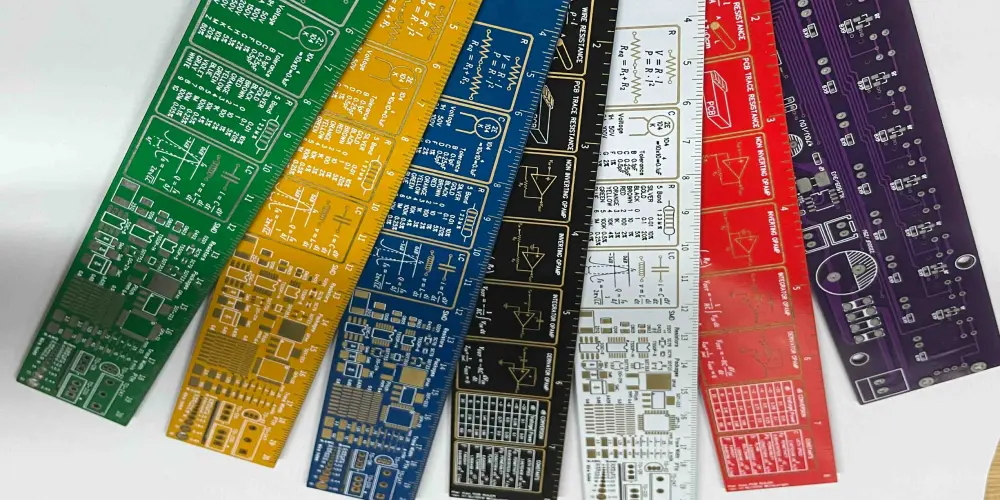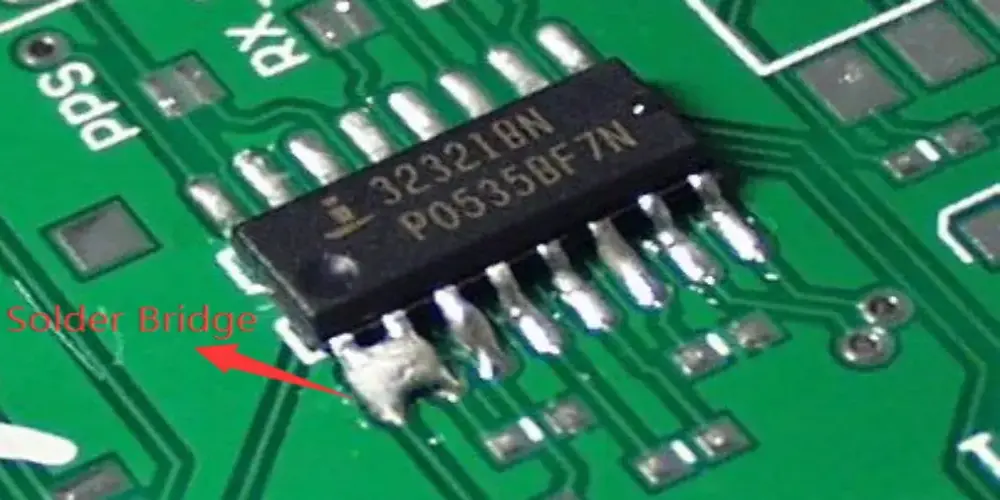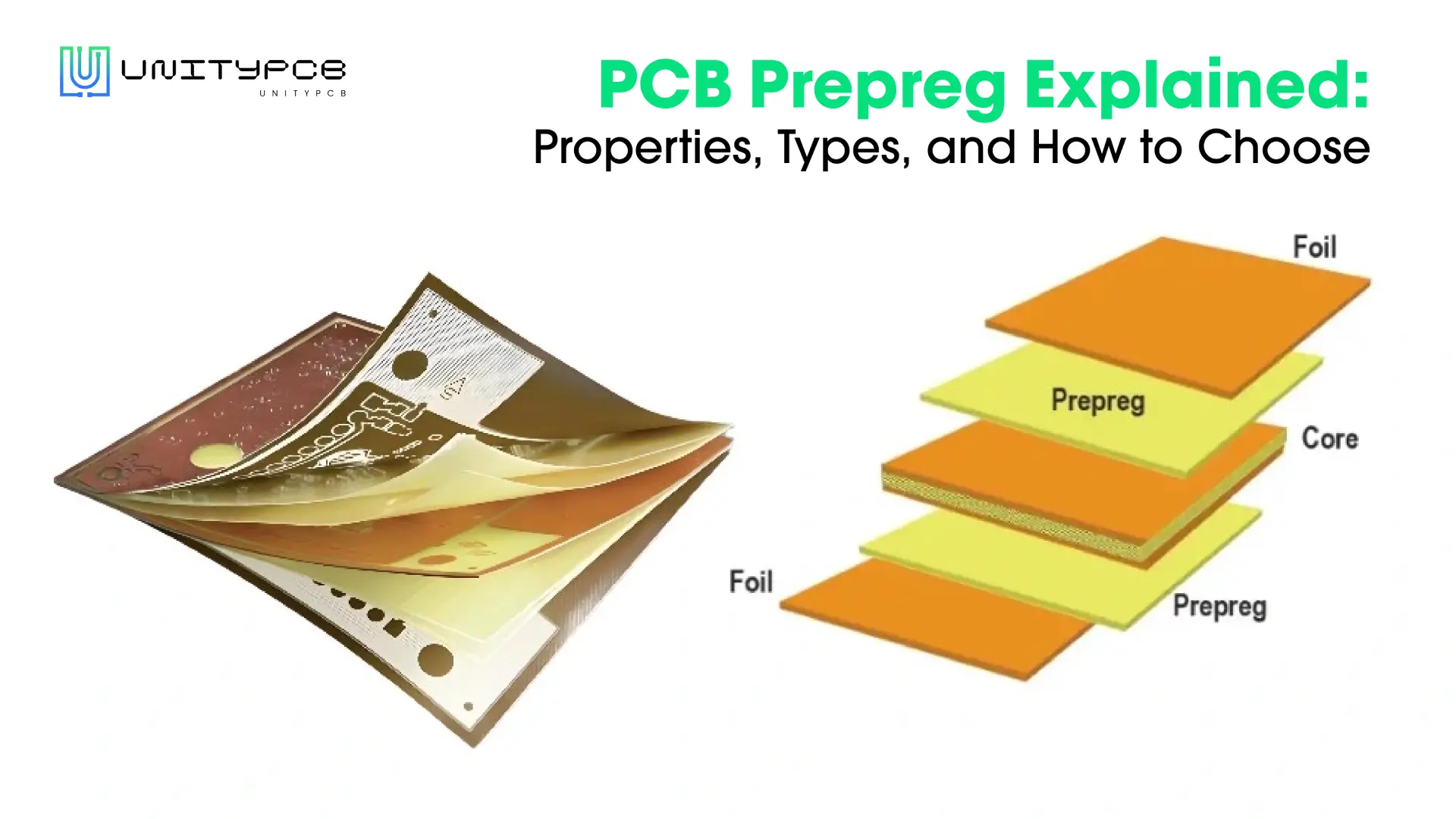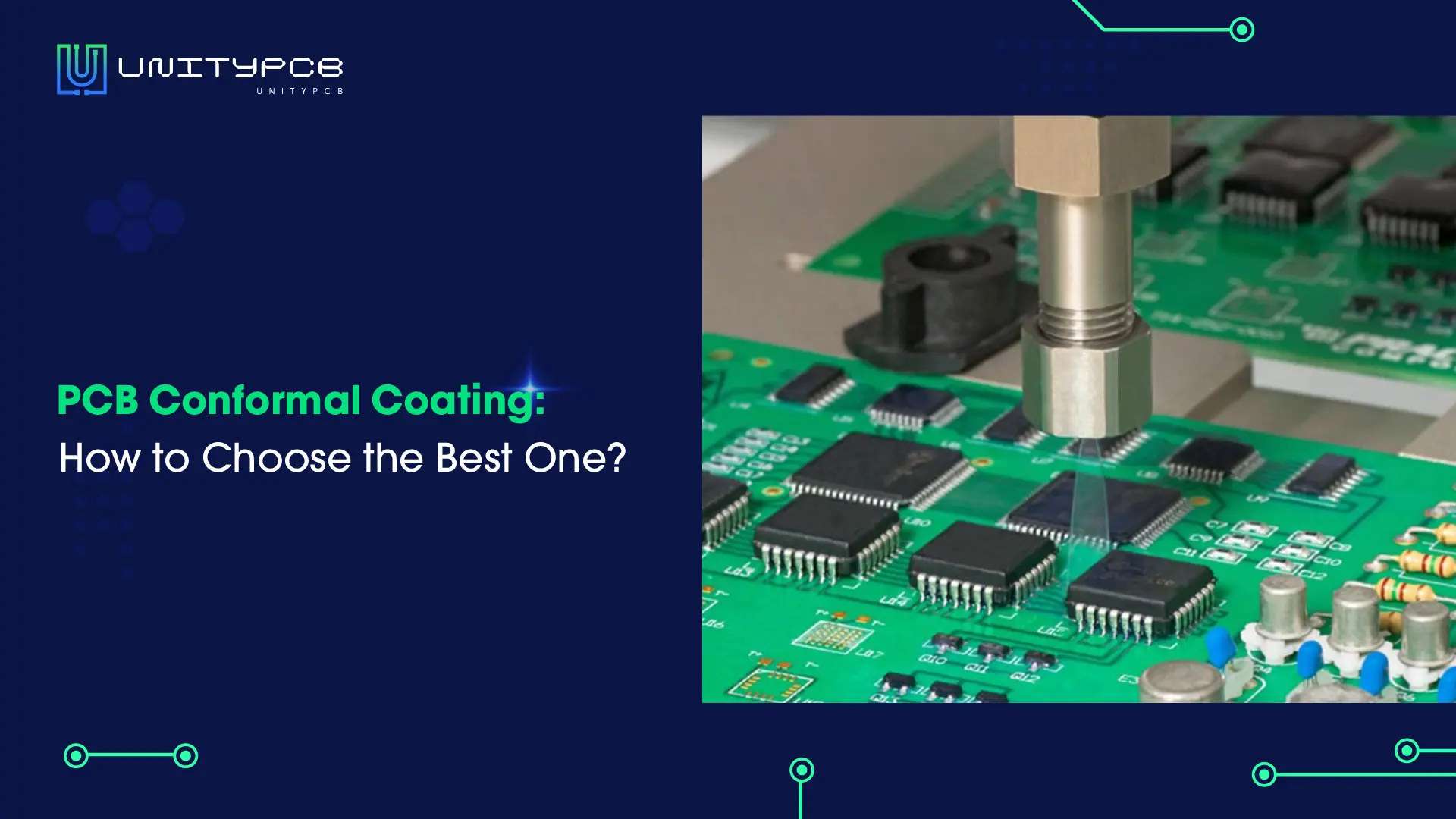Do you know why PCB needs a protective layer? In circuit boards, we often overlook the solder mask layer and pay more attention to the substrate or copper layer. The PCB solder mask usually exists on the top and bottom of the PCB, which is the layer where we see the color of the PCB. This thin coating protects the circuitry and also improves the solderability of the PCB during assembly. We’ll provide you with the best PCB solder mask guide in this post.
What Is a PCB Solder Mask?
PCB solder mask is a colored layer on the PCB that you can see with your naked eye. This is a thin protective layer of lacquer-like polymer used to protect the copper traces on the circuit board from oxidation and environmental contamination. During the soldering process, this protective layer also prevents the solder from accidentally bridging between pads, thus ensuring the reliability and service life of the PCB.
PCB Solder Mask Color Options
In our daily life, most of the circuit boards we see are green. But now, other PCB solder mask colors are gradually being used. Here are the seven most popular colors used in PCB solder masks.

- Green Solder Mask:The most popular one. We will give a detailed explanation below.
- Red Solder Mask: The red PCB solder mask has a bright color and looks very beautiful. It provides excellent visibility and contrast.
- Blue Solder Mask: Blue PCB solder mask has good aesthetics and provides a strong contrast with the silkscreen layer. But its contrast is lighter than green and red.
- Yellow Solder Mask: This is a color that is pleasing to the eye and can highlight the appearance of the PCB. It works well for products that need to highlight their distinctive design or brand personality.
- White Solder Mask: It reflects light more efficiently and is often used in LED applications to enhance light efficiency.
- Black Solder Mask: The black solder mask and white silk screen provide good contrast, making it easy to identify labels on the board. It is a very dark color, making traces more difficult to find.
- Purple Solder Mask: Purple also provides a good contrast to the silkscreen layer. It is darker, making it harder to see the traces. Often used to match a specific product.
Continue reading:PCB Colors Explained: Selecting the Perfect Color for Your Circuit Board
Why Are Most PCBs Usually Green?
When you see the green circuit boards many times, you may want to know why most of them are green. Are other colors available? Here we will reveal this question. The glass epoxy material used to make PCB solder masks was green, which gradually became the standard in the industry. Due to the limitations of early technology, the green PCB solder mask and white silk screen layer formed a sharp contrast and reduced eye fatigue when manually inspecting PCB quality. Now there are many colors to choose from, but most manufacturers still choose green, which is more cost-effective.
What Are the Solder Mask Functions?
PCB solder mask is a protective layer applied on the top and bottom side of circuit board. Below we have outlined several main functions. You will know why we use it and its importance.
Insulation Role
The PCB solder mask serves as an insulating coating, protecting circuits from mechanical scratches and reducing short-circuit risks between copper traces. As electronic products become more compact, with reduced spacing between components and traces, their insulation role is increasingly critical. It also acts as a mask during PCB assembly, ensuring accurate component placement.
Avoiding Solder Bridge
PCB solder mask effectively limits the flow of solder, preventing it from making unwanted connections in unwanted areas. In integrated circuits, where component pads are merely a few millimeters apart. Excess solder can cause unwanted connections between adjacent pads or leads, which can result in short circuits.

Protecting Copper Traces from Damage
Exposed copper traces can oxidize and corrode, which can seriously affect their conductive properties. The solder mask acts as a protective coating that effectively isolates the copper conductors from direct contact with the outside environment and prevents the ingress of moisture, chemicals, and electrolytes. It also prevents dust and foreign matter from contaminating the circuit during assembly, testing, and repair.
Aesthetics Functions
PCB solder mask colors can be used to enhance the visual appeal of the board, helping to match the product design and brand image. Different colors can match the theme of the product or brand and enhance the overall appearance of the PCB.
3 Main Types of PCB Solder Mask
Liquid Photoimageable Solder Mask (LPISM)
It is a material that is made by mixing two different liquids before application. This mixing method maximizes the shelf life of the ink formulation. It can be applied to the PCB surface in a variety of ways, which we will introduce in detail in the next section.
Epoxy Liquid Solder Mask
Epoxy liquid solder mask is an affordable solder mask material in PCB manufacturing. It uses a screen printing process to accurately print the liquid epoxy polymer onto the PCB surface with a woven mesh supporting the ink pattern. The epoxy resin is then hardened through a heat-curing process to form a solid protective layer in a specific color.
Dry Film Solder Mask (DFSM)
It uses a pre-made photosensitive film to form a protective layer. This process first adheres the dry film firmly to the PCB surface through vacuum lamination, ensuring that no bubbles are generated. Then exposure and development processes are performed to form the desired pattern.
From Start to Finish: How to Apply LPI Solder Mask on PCB
Copper layer etching, drilling, and plating are all completed before the PCB solder mask is applied to the PCB surface. This is a detailed guide on applying LPISM to a PCB.
- The board must be thoroughly cleaned of all contaminants and traces of oxidation, which can be done by physically scrubbing or soaking in a cleaning solution. To ensure that the solder mask can adhere perfectly, the board must be completely dried after cleaning.
- There are four different options for LPI coating: electrostatic spraying, screen printing, air spraying, and curtain coating.
- Electrostatic spraying: The ink is sprayed through an atomizing device, such as a rotating bell, and acquires a negative charge during the spraying process. When the liquid photosensitive solder mask acquires a negative charge, it is attracted to the PCB surface by the electric field.
- Silk screen printing: Use a scraper to deposit the ink onto the PCB. You can also use advanced silk screen printers. This requires proper settings of the program such as speed, pressure, etc.
- Air spraying: The LPI solder mask is sprayed onto the circuit board surface using a nozzle. Air spraying has challenges with paint waste and coating thickness control, but is widely used due to its ease of operation and low equipment cost.
- Curtain coating:The PCB passes through a stable liquid curtain of ink, which evenly covers the board surface. This method provides a very uniform coating, suitable for complex PCBs, and can reduce ink loss.
- Put the coated PCB into the oven to dry.
- The film is used to mask the pads, preventing the solder mask from covering them. The clear film shows the areas where the solder mask needs to remain. Light can pass through the clear parts. The black film covers the areas where the solder mask is not needed, preventing light from passing through, thus protecting those parts.
- Through UV light, the solder mask is cured on the PCB.
- After the PCB solder mask has cured, you can remove any remaining undeveloped ink.
Solder Mask vs. Paste Mask: What Are the Differences?
Many people may be confused about solder mask and paste mask. I hope these six key differences make it clear to you.
| Aspect | Solder Mask | Paste Mask |
| Openings | Having no solder mask ink. | Having solder paste. |
| Color Options | Many available colors. | Usually gray. |
| Surface Coverage | Covers the entire PCB surface except for pads and vias. | Only the PCB pad areas where solder paste is applied. |
| Part of the Circuit Board | Yes, it is a part of the PCB itself. | No, it isn’t a part of the PCB, it is only used for the stencil. |
| Application Process | Applied during PCB manufacturing. | Applied during the PCB assembly process. |
| Function | Protects the copper traces and avoids solder bridges from happening. | Specifies the locations for applying solder paste. |
Ending Notes: Which Solder Mask Is Right for Your PCB?
When choosing a PCB solder mask, multiple factors need to be considered: PCB physical size, layout, and application environment. For high-reliability industries (aerospace and medical), it is necessary to give priority to the industry standards and specific requirements of PCB solder mask to ensure that strict quality and performance are met. Photosensitive solder mask is the main choice in modern PCB manufacturing. Its application methods are divided into liquid and dry film. Dry film is suitable for designs with flatter surfaces, while liquid solder mask is more suitable for PCBs with complex surface features.
With UnityPCB’s expertise, we help you find the ideal solder mask solution. Our one-stop PCB & PCBA service, backed by years of experience in solder mask color and design, ensures tailored advice for your specific needs. Let us assist you today!


